The Rich Imagery of Uganda's Currency Notes, Depicting Nature and Heritage

Uganda is a country rich in natural, cultural, and historical heritage. It is home to diverse wildlife, scenic landscapes, vibrant traditions, and friendly people. Uganda is also known as the Pearl of Africa, a name given by Winston Churchill in his book "My African Journey."
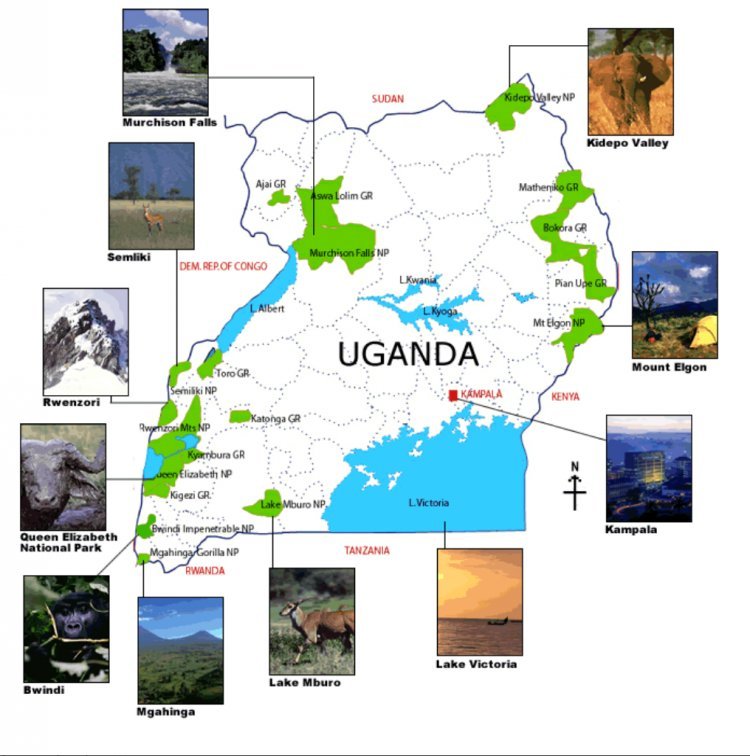
As part of the #ExploreNorth domestic tourism campaign, the state ministry, Hon Martin Mugarra, was questioned about why the Aruu Falls in Pader district are not featured on the Ugandan currency notes. Hon Odonga Otto said,
"Hon minister, we have a lot of tourist features in Uganda, and some of them are featured on the national currency notes, but there are no more beautiful sites like our Aruu Falls here in Pader. Why don’t we have them feature on one of the Uganda currency notes as a way of showcasing their beauty?"
Including Aruu Falls on Ugandan currency notes would be a significant boost for promoting domestic tourism. He added.

Aruu Falls are a true gem in the heart of Uganda, captivating visitors with its breathtaking beauty, melodic symphony, and abundant natural wonders. The sight of the falls, the soothing sound of cascading water, and the untouched surroundings create an enchanting atmosphere that draws people from far and wide. Them featuring on the Ugandan currency note would be plus for promoting domestic tourism.

One way to appreciate and celebrate Uganda's heritage is to explore its currency notes. The Ugandan shilling (UGX) is the official currency of Uganda, issued by the Bank of Uganda. Over the years, the currency has undergone several changes and upgrades, with the latest series of notes being issued in 2010. These notes come in denominations of 50,000, 20,000, 10,000, 5,000, 2,000, and 1,000 shillings, and they feature various elements that reflect the country's identity and attractions.
The 50,000 Shillings Note
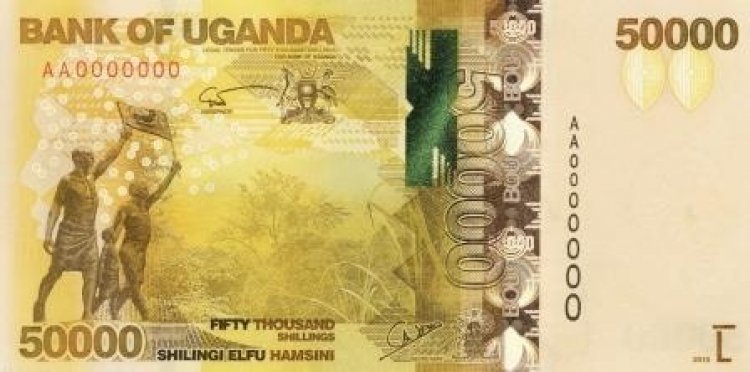
The 50,000 shillings note is the highest denomination of Ugandan currency and features the following key elements:
The Independence Monument: This monument represents Uganda's independence from British colonial rule in 1962.
The Crested Crane: This elegant bird is the national emblem of Uganda, symbolizing the country's unity and the peaceful nature of its people.
Silverback Gorilla: The endangered mountain gorilla is native to Uganda and represents the country's diverse wildlife.
Map of Uganda: The note features a map of Uganda, highlighting the equator's path through the country.
Other features: The note also displays images of a farmer plowing a field and a hydropower dam, representing Uganda's agricultural and industrial sectors.
The 20,000 Shillings Note

The 20,000 shillings note showcases the following elements:
Coat of Arms: The Ugandan coat of arms symbolizes the nation's identity and sovereignty.
Drum: In Ugandan culture, drums are used for communication and ceremonies, representing the country's rich cultural heritage.
Cow: The Ankole long-horned cattle, native to Uganda, symbolize wealth and prosperity.
Map of Uganda: Similar to the 50,000 shillings note, this note also features a map of Uganda.
Nile River: The world's longest river, the Nile, begins its journey in Uganda, symbolizing the country's abundant water resources.
Independence Monument: The note also features the Independence Monument, similar to the 50,000 shillings note.
The 10,000 Shillings Note
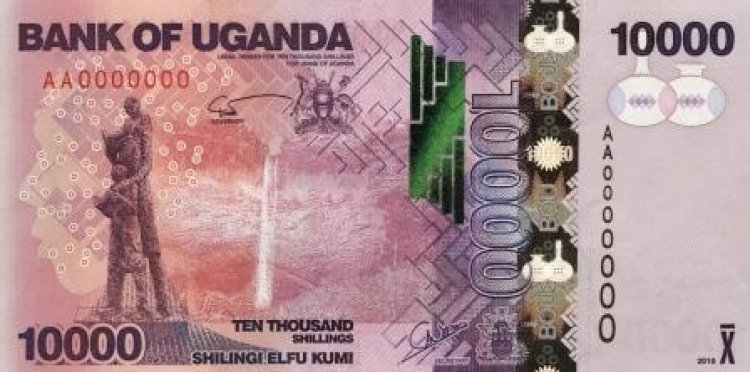
The 10,000 shillings note highlights the following features:
Banana Plant: The banana plant is an essential crop in Uganda, used as both food and a source of income for many households.
Independence Monument: The note also features the Independence Monument, similar to the 50,000 and 20,000 shillings notes.
Coat of Arms: The Ugandan coat of arms is
also present on this note.
Other features: The note also displays images of a fisherman and a coffee plant, symbolizing Uganda's fishing and coffee industries.
The 5,000 Shillings Note
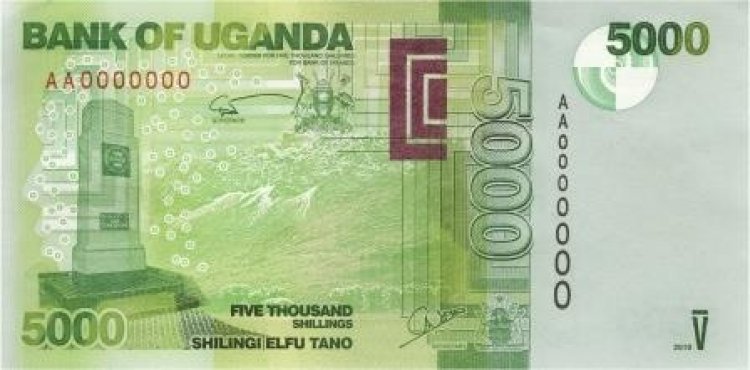
The 5,000 shillings note is green in color and features the following elements:
Map of Uganda: Similar to the 50,000- and 20,000-shillings notes, this note also features a map of Uganda.
Bird's Nest: The note showcases a bird's nest, symbolizing the rich birdlife found in the country.
Independence Monument: As seen on the other notes, the Independence Monument is also featured on this note.
Coat of Arms: The Ugandan coat of arms is present on the 5,000 shillings note.
The 2,000 Shillings Note
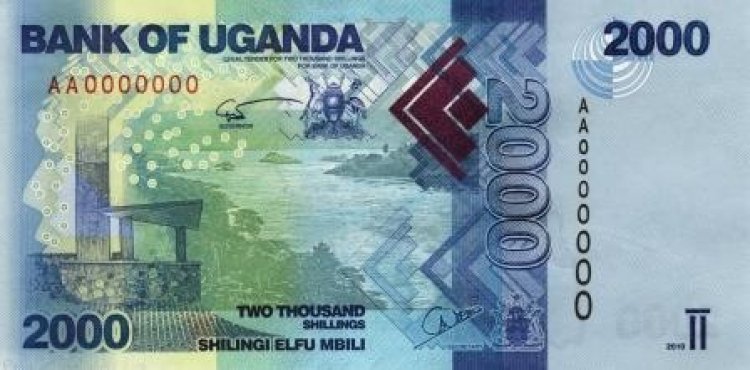
The 2,000 shillings note is blue in color and consists of:
Fish Symbol: This symbol represents Uganda's fishing industry and the abundance of fish in its lakes and rivers.
Independence Monument: The note also features the Independence Monument, similar to the other notes mentioned above.
Map of Uganda: As seen on the other notes, this note also features a map of Uganda.
The 1,000 Shillings Note
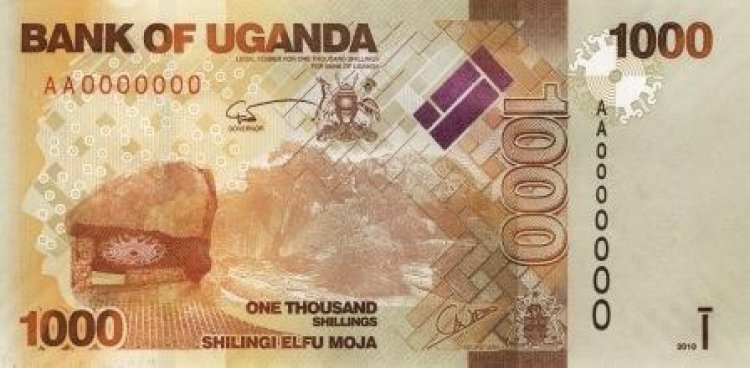
The 1,000 shillings note, the smallest denomination of Ugandan currency notes, consists of:
Map of Uganda: The note also features a map of Uganda, similar to the other notes mentioned above.
Uganda Kob: The Uganda Kob, a type of antelope, symbolizes Uganda's diverse wildlife.
Independence Monument: As seen on the other notes, the Independence Monument is also featured on this note.

Ugandan currency notes have the potential to be powerful catalysts for promoting domestic tourism. By featuring tourist attraction sites on these notes, we can ignite curiosity, create awareness, and inspire Ugandans to explore their own country. The visual representation of Uganda's natural beauty and cultural heritage on currency notes serves as a constant reminder of the incredible destinations that await within the borders. By embarking on local journeys, Ugandans can contribute to the growth of the economy, foster cultural exchange, and cultivate a sense of national pride.

































